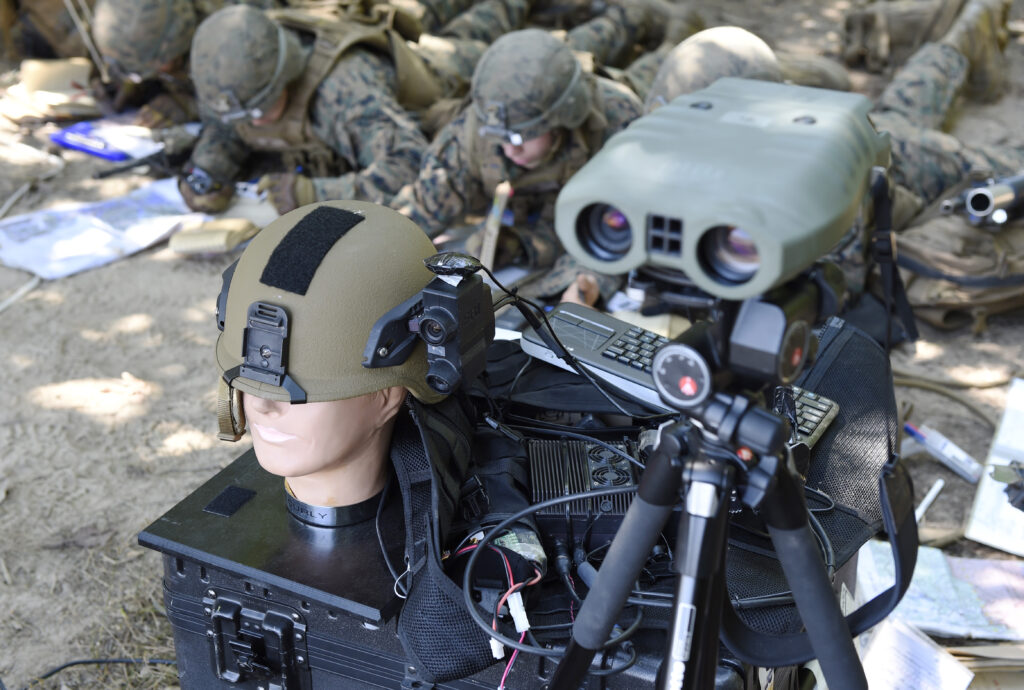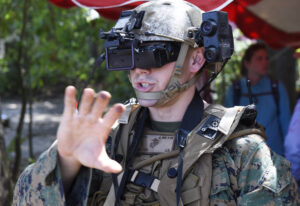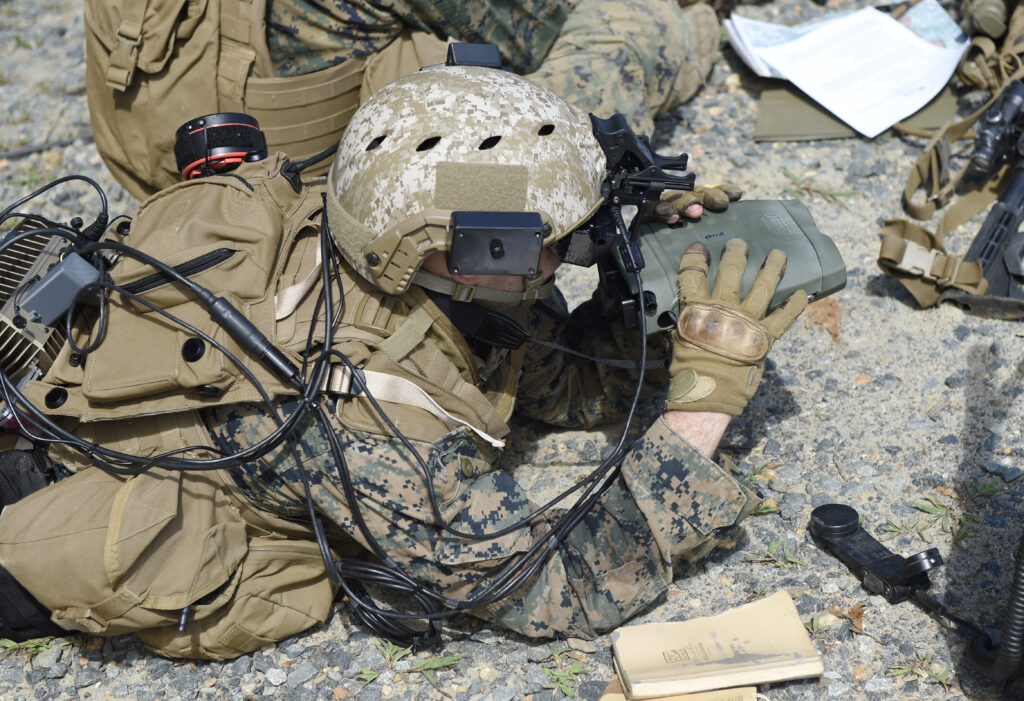Marines Explore ‘Augmented Reality’
Posted on

Augmented Immersive Team Trainer (AITT)
Think of it as Google Glass goes to war — only less nerd and more Marine. Budget cuts and readiness shortfalls have the US military looking at virtual reality as a partial replacement for expensive field exercises. But VR has real limits. So this month, young Marines at the Infantry Officer Course in Quantico tested a technology to get the best of both worlds: augmented reality.
While virtual reality puts the user in a completely computer-generated environment, augmented reality superimposes computer-generated elements — say, a tank, a helicopter, or a building — on the real world. That lets troops go through the actual, physical motions of the skill they’re training for and build muscle memory, without restricting the targets and support units.

A Marine tries out the AITT at Quantico
Google Glass and football broadcasts already use a limited form of augmented reality, superimposing static elements like a yellow first-down line on the footage of the actual game. Military training requirements are much more complex. Ground combat is a team sport, so different users in different places need to see the same computer-generated component — and the perspective has to change realistically as the users move around. The computer-generated components themselves need to move and interact, for example by blowing up.
The system tested in Quantico, the Augmented Immersive Team Trainer (AITT), is primarily meant to train troops to call in airstrikes and artillery barrages. That’s one of the hardest kinds of training to do live. Real aircraft and artillery batteries are expensive and often unavailable when other units want to train with them. Real bombs, missiles, shells, and targets can be used only once. Augmented reality training replaces all these costly components while keeping the crucial one — the human being — with his boots on the actual ground.
AITT could be used for other training in the future. After four years of development and testing, the service will conduct “a large-scale demonstration [and] assessment” this October. The project will move from the Office of Naval Research to the regular Marine procurement system, which will decide whether to buy augmented reality in bulk.

A Marine trains with the AITT system at Quantico
Subscribe to our newsletter
Promotions, new products and sales. Directly to your inbox.
